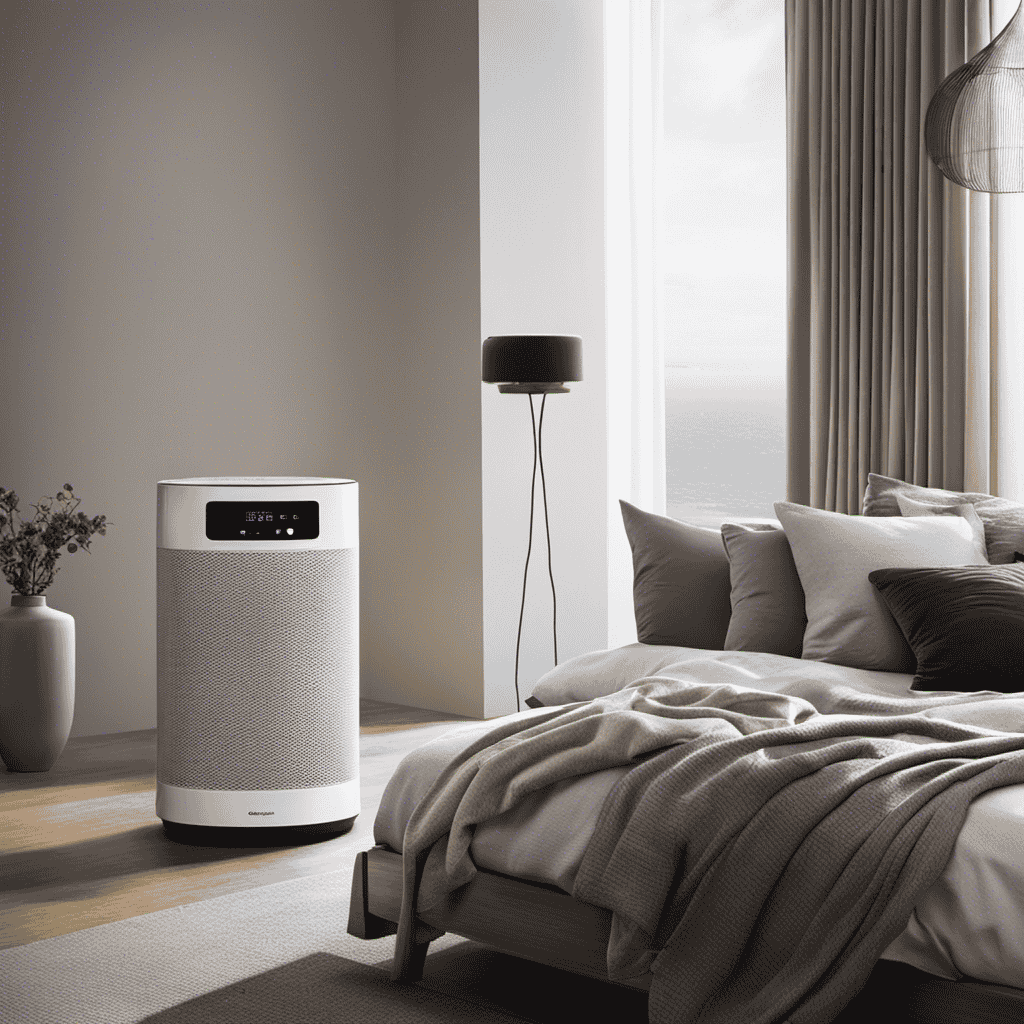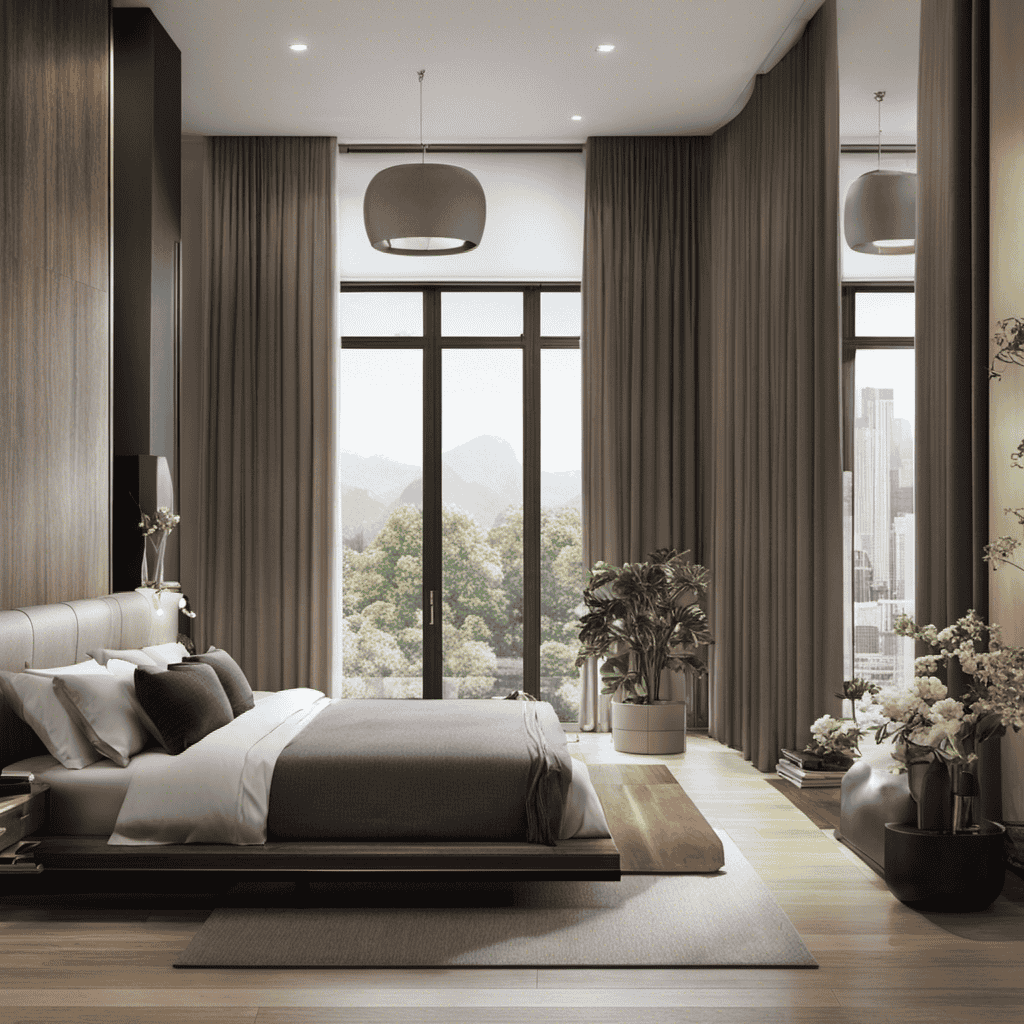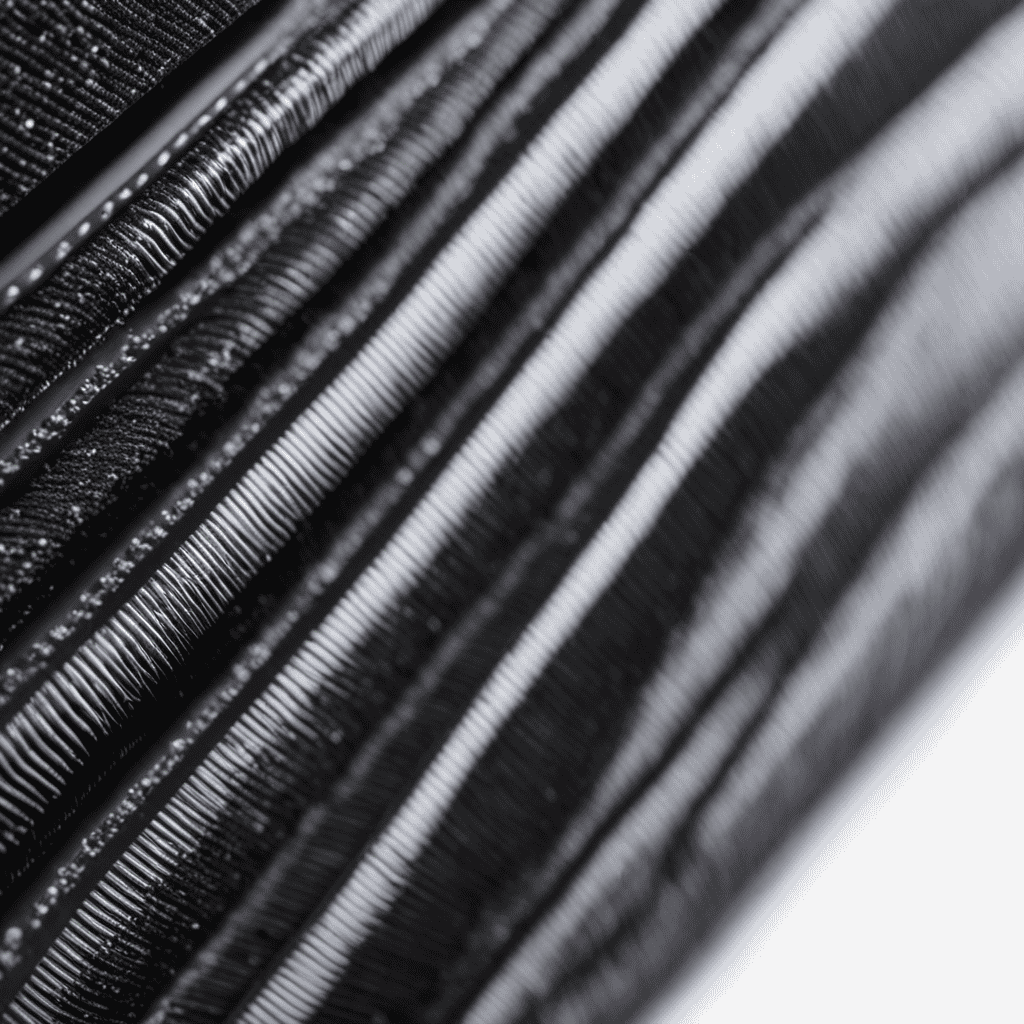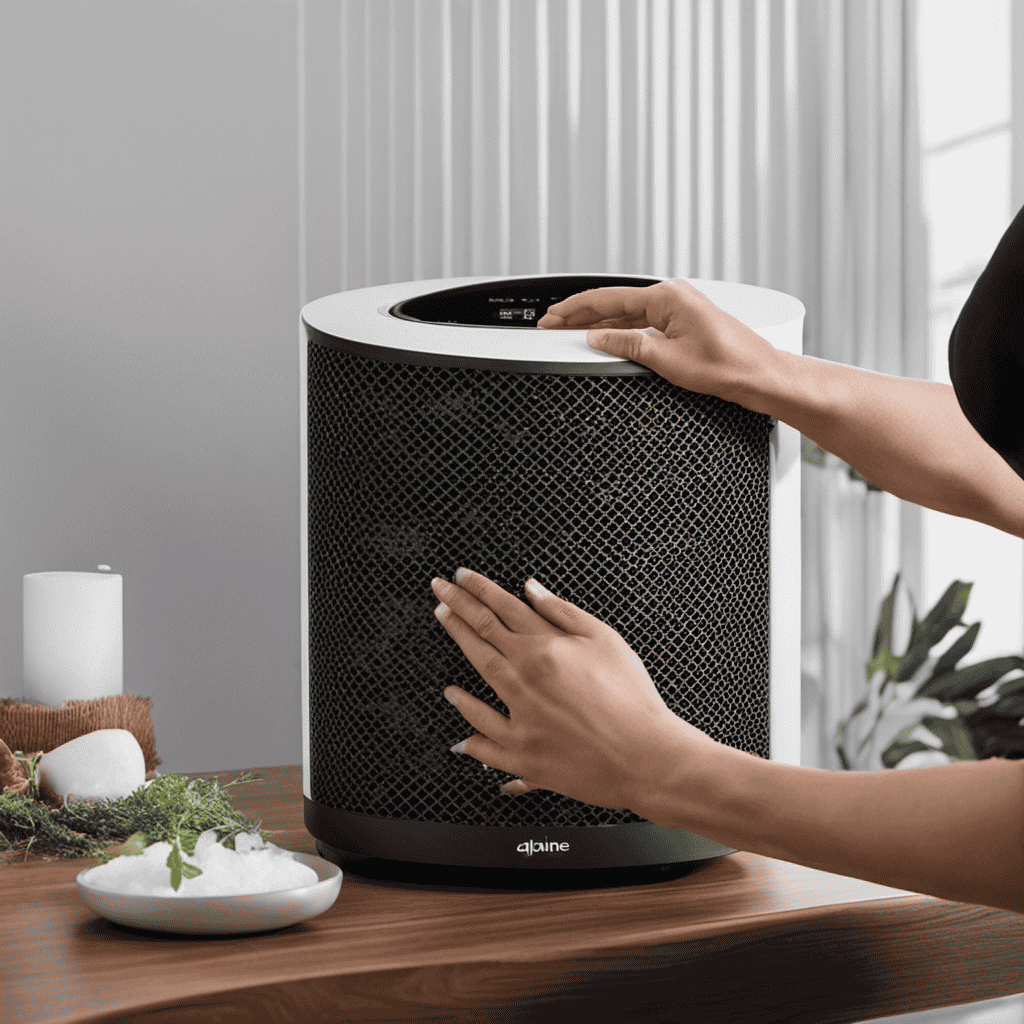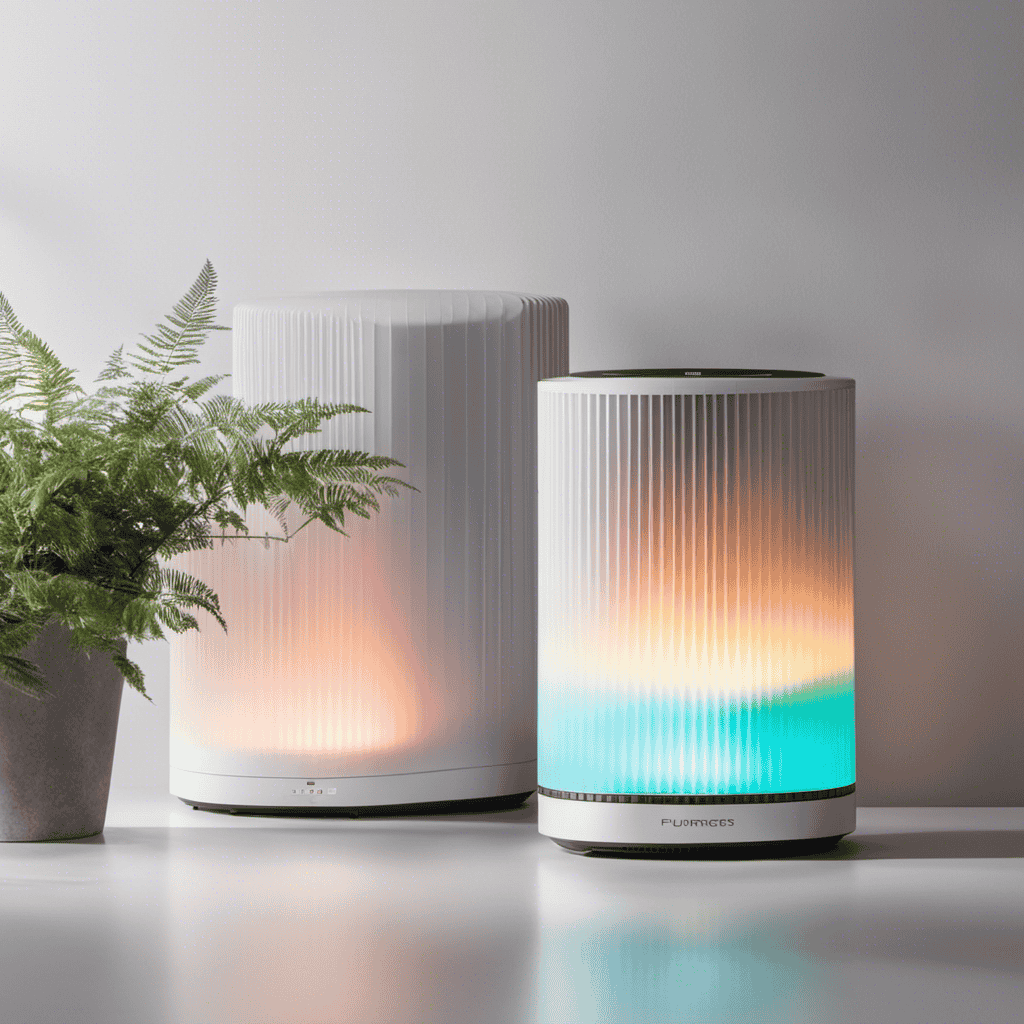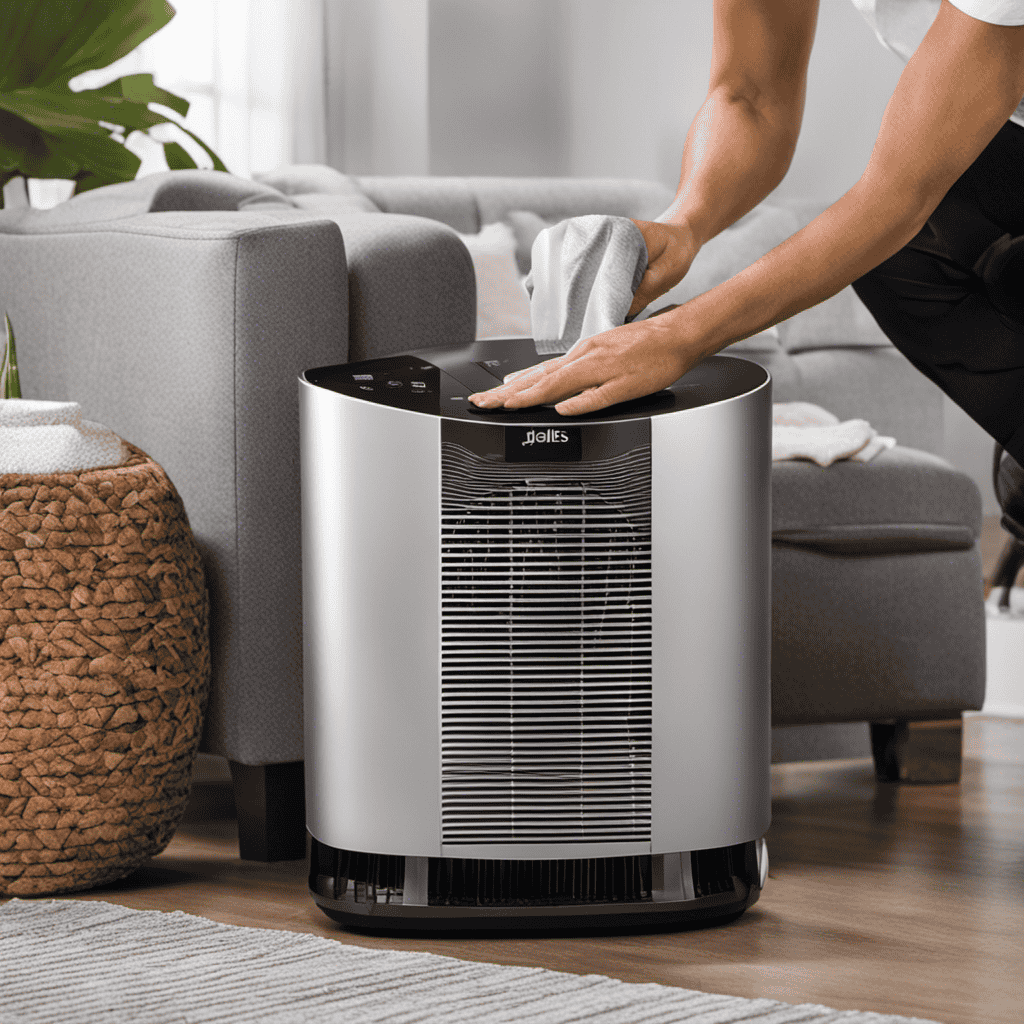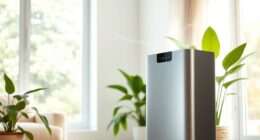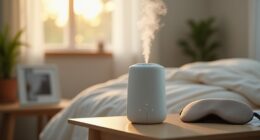Stepping into my neighborhood home improvement retailer, I was immediately struck by the vast selection presented before me. Shelves were stocked with air purifiers and humidifiers, all claiming to enhance the air quality in my residence. The question was, which one was the right choice for me?
In this article, we will explore the key differences between air purifiers and humidifiers, factors to consider before making a decision, and the benefits of each.
By the end, you’ll have all the information you need to make an informed choice.
Key Takeaways
- Air purifiers focus on cleaning the air by removing pollutants and allergens, while humidifiers focus on adding moisture to the air.
- Air purifiers capture particles like dust, pollen, and pet dander, while humidifiers help alleviate symptoms like dry throat, coughing, and congestion.
- Factors to consider before choosing an air purifier or humidifier include air quality needs, room size, budget, maintenance requirements, and comparison with air conditioners.
- Benefits of using an air purifier include reducing allergens and asthma triggers, removing harmful pollutants and gases, enhancing respiratory health, improving overall indoor air quality, and providing relief for allergy and asthma sufferers. Advantages of having a humidifier include alleviating dryness and improving respiratory health, preventing dryness in nasal passages, throat, and lungs, soothing dry and irritated skin, alleviating dryness in the eyes, and helping prevent snoring and improving sleep quality.
Key Differences Between Air Purifiers and Humidifiers
If you’re trying to decide between an air purifier and a humidifier, it’s important to understand the key differences between the two.
Air purifiers are designed to remove pollutants and allergens from the air, improving indoor air quality. They use filters or other technologies to capture particles like dust, pollen, and pet dander.
On the other hand, humidifiers add moisture to the air, which can be beneficial for dry skin, allergies, and respiratory issues. They help alleviate symptoms like dry throat, coughing, and congestion.
While air purifiers focus on cleaning the air, humidifiers focus on adding moisture. Both have their own benefits, but it ultimately depends on your specific needs and concerns.
Considering factors such as allergies, respiratory health, and indoor humidity levels can help you make an informed decision between an air purifier and a humidifier.
Factors to Consider Before Choosing an Air Purifier or Humidifier
Before making a decision, it’s important to consider factors such as budget, room size, and specific needs. When deciding between an air purifier or a humidifier, there are several factors to consider.
-
Air quality needs: Determine whether you need to improve air quality by removing allergens and pollutants or by adding moisture to combat dryness.
-
Room size: Consider the square footage of the room where you plan to use the device, as this will determine the appropriate coverage area.
-
Budget: Set a budget and compare the prices of different models to ensure you’re getting the best value for your money.
-
Maintenance: Consider the maintenance requirements of each device, including filter replacements and cleaning routines.
-
Comparison with air conditioners: Assess whether you already have an air conditioner and if it provides the desired level of air purification or humidity control.
Benefits of Using an Air Purifier in Your Home
Using an air purifier in your home can greatly improve the quality of the air you breathe. Air purifiers are specifically designed to remove pollutants, allergens, and contaminants from the air, making it cleaner and healthier to inhale. Compared to humidifiers, which primarily increase the moisture level in the air, air purifiers focus on eliminating harmful particles.
To understand the benefits of using an air purifier, let’s consider the following table:
| Benefits of Using an Air Purifier in Your Home | Evidence |
|---|---|
| Reduces allergens and asthma triggers | Studies have shown that air purifiers can effectively capture allergens like pollen, pet dander, and dust mites, providing relief for allergy and asthma sufferers. |
| Removes harmful pollutants and gases | Air purifiers with HEPA filters can eliminate pollutants such as smoke, volatile organic compounds (VOCs), and harmful gases, improving overall indoor air quality. |
| Enhances respiratory health | By removing pollutants and allergens, air purifiers can help reduce respiratory symptoms and improve lung function, leading to better overall health. |
As you can see, using an air purifier can have a significant impact on the air quality in your home, providing numerous benefits for your respiratory health. However, it’s important to consider the advantages of having a humidifier in your living space as well.
Advantages of Having a Humidifier in Your Living Space
Having a humidifier in your living space can help alleviate dryness and improve respiratory health. There are several advantages of using a humidifier for respiratory health and the benefits it provides for skin hydration. Here are some key points to consider:
- Increased moisture in the air can help relieve symptoms of respiratory conditions such as asthma, allergies, and bronchitis.
- Humidifiers can prevent dryness in the nasal passages, throat, and lungs, reducing the risk of infections and promoting better breathing.
- Proper humidity levels can soothe dry and irritated skin, preventing conditions like eczema and dryness.
- Humidifiers can alleviate dryness in the eyes, reducing discomfort and irritation.
- Maintaining optimal humidity levels can also help prevent snoring and improve sleep quality.
How Air Purifiers Improve Indoor Air Quality
As someone who values clean and healthy indoor air, I believe it’s important to understand the benefits of air purifiers. Air purifiers have been shown to improve indoor air quality by removing harmful particles such as dust, pollen, pet dander, and smoke.
Understanding the common indoor pollutants and selecting the right air purifier can greatly contribute to creating a healthier living environment.
Benefits of Air Purifiers
You’ll find that air purifiers can greatly improve the quality of the air you breathe, reducing allergens and pollutants in your home. Air purifiers have several key features that make them effective in cleaning indoor air:
-
HEPA filters: These high-efficiency particulate air filters can capture over 99% of airborne particles, including dust, pollen, pet dander, and smoke.
-
Activated carbon filters: These filters are designed to remove harmful gases and odors from the air, such as volatile organic compounds (VOCs) and formaldehyde.
-
UV-C light: This technology uses ultraviolet light to kill bacteria, viruses, and mold spores that may be present in the air.
-
Air quality sensors: Some air purifiers come with built-in sensors that can detect the level of pollutants in the air and adjust the purification process accordingly.
-
Quiet operation: Many air purifiers are designed to operate silently, ensuring that they don’t disturb your sleep or daily activities.
Clean air in our homes is important for our overall health and well-being. Polluted indoor air can lead to respiratory problems, allergies, and other health issues. By using an air purifier, you can create a healthier living environment for you and your family.
Common Indoor Pollutants
To improve the air quality in your home, it’s important to be aware of common indoor pollutants that can affect your health.
Indoor air pollution refers to the presence of harmful substances in the air we breathe indoors. These pollutants can come from various sources such as tobacco smoke, cleaning products, pet dander, mold, and volatile organic compounds (VOCs) released by furniture and building materials.
Breathing in these pollutants can have detrimental effects on our health, including respiratory problems, allergies, and even long-term chronic conditions like asthma. Studies have shown that exposure to indoor air pollution can also increase the risk of developing heart disease and certain types of cancer.
Therefore, it is crucial to take measures to reduce indoor air pollution in order to safeguard our health and well-being.
Choosing the Right Model
When selecting the right model, it’s important to consider factors such as the size of your space and the specific needs you have for improving indoor air quality. Here are some key features to compare and cost considerations to keep in mind:
-
Filter type: Look for models that use high-efficiency particulate air (HEPA) filters, as they are highly effective in removing small particles and allergens from the air.
-
Coverage area: Make sure the model you choose is suitable for the size of your space. Some models are designed for smaller rooms, while others can cover larger areas.
-
Noise level: Consider the noise level of the air purifier or humidifier, especially if you plan to use it in a bedroom or office where quietness is important.
-
Maintenance requirements: Check if the model requires frequent filter changes or other maintenance tasks, as this can add to the overall cost of ownership.
-
Energy efficiency: Look for models that are energy-efficient to save on electricity costs over time.
The Role of Humidifiers in Alleviating Dry Air Symptoms
When it comes to dealing with dryness and alleviating dry air symptoms, humidifiers play a crucial role.
As someone who has experienced the discomfort of dry air firsthand, I can attest to the effectiveness of using a humidifier.
Not only do humidifiers add moisture to the air, but they also help relieve symptoms such as dry skin, irritated throat, and congestion.
Humidifiers for Dryness
If you’re experiencing dryness in your home, a humidifier can help alleviate it. Humidifiers work by adding moisture to the air, which can provide relief for dry skin and prevent respiratory issues.
Here are five key benefits of using a humidifier:
-
Relieves dry skin: Dry air can cause your skin to become dry and itchy. A humidifier adds moisture to the air, helping to keep your skin hydrated and preventing dryness.
-
Prevents respiratory issues: Dry air can irritate your respiratory system and lead to conditions such as dry cough, sore throat, and nasal congestion. A humidifier helps to keep your airways moist, reducing the risk of these respiratory issues.
-
Improves sleep: Dry air can make it difficult to breathe properly, leading to disrupted sleep. Using a humidifier can create a more comfortable sleep environment by adding moisture to the air.
-
Reduces static electricity: Dry air can increase static electricity in your home, causing your clothes to cling and giving you static shocks. A humidifier helps to balance the moisture levels in the air, reducing static electricity.
-
Preserves wooden furniture: Dry air can cause wooden furniture to crack and warp. By maintaining proper humidity levels with a humidifier, you can help protect your furniture from damage.
Relieving Dry Air Symptoms
To relieve the symptoms of dry air, you should consider using a humidifier in your home. Dry air can lead to various discomforts, including dry skin and allergies.
Humidifiers work by adding moisture to the air, which can help alleviate these symptoms. Dry skin is often a result of low humidity levels, as the air absorbs the moisture from our skin. By increasing the humidity in your home, you can prevent your skin from becoming dry and cracked.
Additionally, humidifiers can help combat allergies by reducing the amount of airborne allergens, such as dust and pollen. The moisture in the air can help settle these particles, making it easier for allergy sufferers to breathe.
Overall, a humidifier can be an effective solution for relieving dry air symptoms and improving overall indoor air quality.
Choosing the Right Air Purifier or Humidifier for Your Needs
You should consider your specific needs and preferences before deciding on whether to get an air purifier or a humidifier. Both have their own benefits and it’s important to choose the one that suits your requirements best.
Here are some key features and maintenance tips to help you make an informed decision:
-
Air purifier:
-
Key features: HEPA filters, activated carbon filters, UV-C light technology
-
Maintenance tips: Regularly clean or replace filters, keep the unit away from dust or debris, follow manufacturer’s instructions for optimal performance
-
Humidifier:
-
Key features: Cool mist or warm mist options, adjustable humidity levels, large water tank capacity
-
Maintenance tips: Regularly clean the water tank, use distilled water to prevent mineral buildup, replace filters as recommended
Considering these factors will ensure that you choose an air purifier or humidifier that meets your specific needs and is easy to maintain.
Conclusion
After analyzing the key differences, benefits, and advantages of air purifiers and humidifiers, it is clear that both play crucial roles in improving indoor air quality.
While air purifiers effectively eliminate pollutants and allergens, humidifiers combat dry air symptoms and enhance overall comfort.
To make the right choice, consider your specific needs and preferences.
Remember, just like a gentle breeze on a hot summer day or a refreshing sip of water when you’re parched, the perfect air purifier or humidifier can bring a breath of fresh air into your living space.
